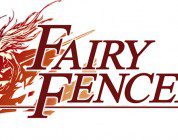There wasn’t a spiky-haired protagonist to be found. At a time when most JRPGs relied on small parties battling other groups, and combat was often more of a distraction than a key point, Langrisser (originally released in North America as Warsong in 1991) took a different approach, telling its big world story through combat encounters, rather than around them. Since then, the rest of the series has been difficult to find in the West. Now NIS America looks to change that by crafting a remastered Langrisser I & II package.
Both Langrisser I and Langrisser II feature epic adventures as a hero journeys to find his destiny, save the world, and perhaps even find love. Sure today that sounds a little cliché, but the classic Hero’s Journey has been a staple in all forms of fiction since Ancient Greece. There’s nothing wrong with a big heroic adventure.
Both games start the player off by answering a personality quiz from Lushiris, the Goddess of Light. These answers influence what type of character the player starts with. However, with at least twelve classes available for every character, and characters able to fluidly move between classes, not starting with a perfect build is hardly a long-term issue. NIS America also included a helpful nod to the evolution of gaming tastes of the past decades with a quick-start option: players can choose to start the game in the classic manner, or start with a couple of mid-tier bonus items and some extra gold.
As previously noted, Langrisser I was originally released in North America for the SEGA Genesis in 1991 as Warsong. After that, the series largely disappeared from the West, until the release of Langrisser Mobile in 2019. Despite being a mobile phone gacha game, Langrisser Mobile also served as a sequel to Langrisser V, the final game in the main series. Although fan translations of various games exist, NIS America’s remaster marks the first official Western release of Langrisser II.
Both Langrisser I and II are built around the same game and graphics engine, and play functionally identically. Combat is the core focus, with each chapter being based around a single major battle. Most of the story plays out in pre- and post-battle sequences on the battlefield grid.
On the battlefield, players start out by positioning their hero units, purchasing mercenary support units for each hero if desired, and then prosecuting a (hopefully) successful battle strategy. Units have a rock-paper-scissors type strategy for their strengths and weaknesses. Making good strategic decisions about which mercenary support troops to pair with a hero can potentially mean the difference between victory and defeat.
Once in the actual battle, players have full control of both their hero units and all of their mercenaries. This can mean over forty units to move in a single round. While nice for tactical players who enjoy micro-managing their units, it can also make battles drag on longer than is comfortable. There are some limited automation options to allow mercenary units to prefer attack/defend/follow options based on what the hero does, but combat can still feel like a chore at times. Another combat issue is that the game doesn’t automatically select an active unit after finishing another unit’s turn, nor does it provide an automatic option to end a turn when all units have been moved.
In between chapters, the game map is used to adjust heroes, shop for gear, and potentially go back and replay previous chapters.
Both games offer multiple branching storylines based on whether certain conditions are met in some chapters. However, once a branch has been chosen, there’s no way to switch story branches mid-stream. To experience all of the possible storyline options, players need to either pick a branch and stick with it to the end, or maintain a bunch of save files.
NIS America provided a bevy of graphics options in their remaster. Both the character portraits and the battlefield grid have been totally remastered. However, the old-style character portraits and a 16-bit styled battlefield grid are also available. I love the new character styles, but for those that want to feel like their playing on a Genesis again can max the game to their taste. Players can mix and match between their preferred character portrait and battlefield styles. Some of the “improved” character portraits felt a little odd, with many characters seeming to lose 10-20 years off their age in the new versions, but the old portraits are, again, easily switched on. The background music can also be toggled between a classic chiptune style and a modern orchestrated version. Voice audio is Japanese only, with English subtitles.
With all of the branching storylines, players can expect to spend well over forty hours in each game. Just finishing a single storyline will be a decent time commitment, but that’s far from the whole story.
Tactical gridders have been experiencing a good bit of a renaissance over the past few years. Langrisser I and II take things back to the old-school tactical JRPG in the best way possible. The storylines are interesting, offering a depth of feeling from various characters that’s missing from a lot of other games. The tactical combat, despite its issues, provides a good challenge for wargamers, and the remastered graphics beautify the game while still remaining true to the source material. JRPG fans looking for a faithful remaster of a classic game, or just looking for a new tactically competent gridder will find a lot to enjoy here.
Langrisser I & II is available now for PS4 and Nintendo Switch consoles, and on Steam for for PC players. A digital PS4 copy was provided by NIS America for the purpose of review.









